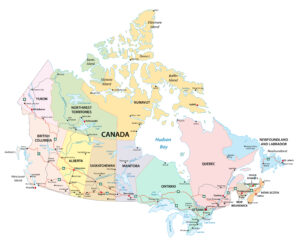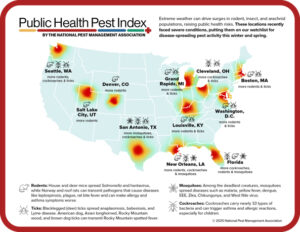body.kc-css-system .kc-css-1407003{margin-top: 30px;padding-top: 38px;}body.kc-css-system .kc-css-90216 .section-title h2,body.kc-css-system .kc-css-90216 .title_tx h2{font-size: 1.4em;padding-top: 27px;}body.kc-css-system .kc-css-90216 .section-title h2 span,body.kc-css-system .kc-css-90216 .title_tx h2 span,body.kc-css-system .kc-css-90216 .em-icon i{color: #973333;}body.kc-css-system .kc-css-3599576 .divider_inner{border-color: #fcb100;border-style: solid;}body.kc-css-system .kc-css-3557746.kc_title,body.kc-css-system .kc-css-3557746 .kc_title,body.kc-css-system .kc-css-3557746 .kc_title a.kc_title_link{font-size: 1.2em;}body.kc-css-system .kc-css-1425633 .divider_inner{border-color: #fcb100;border-style: solid;}body.kc-css-system .kc-css-260902{background: rgba(245, 253, 255, 0.37);margin-top: 24px;padding-top: 24px;}

Case Rates and Travel Considerations
Key Points:
- In today’s Recommendations for Industry, we discuss why it is important to continue worker protections (including the new OSHA program). Read more below.
- Do you want to know when different sectors of the food and agriculture world can be vaccinated? Food manufacturing versus food service versus food retail (grocery)? Check out the 50-state chart updated this past Monday March 16, 2021, here.
- OSHA Injury Reporting – Employers may still submit the required 2020 injury and illness data beyond the March 2, 2021 deadline.
- Italy has entered its third lockdown. In Germany, COVID cases are rising.
- A recent study published in NEJM has found that AstraZeneca’s vaccine does not prevent the B1351 COVID-19 variant.
Recommendations for Industry
New Challenges Continue in Worker Protections
It has now been more than a year since COVID-19 was declared a pandemic, but the industry is continuing to face worker-protection challenges. Even as vaccines become more widely dispensed, states reopen, and the decline in U.S. case rates stabilizes, we are seeing cases resurging in parts of Europe, as well as Brazil and India. Whether this is due to a rise in variants in those areas, changes in people's behavior, or that fewer people have immunity in those areas, is unknown, but the same could happen here.
For that reason, TAG continues to recommend that businesses maintain COVID worker protections … and it seems that OSHA agrees, as it has launched a new program to protect high-risk workers and focus on employers that retaliate against workers with safety concerns. To enforce this, OSHA is enhancing its inspections of businesses.
So now is not the time to back off anything; the potential consequences of lessening protections distinctly outweigh any benefits. However, now is the time to developing your strategy for backing off in anticipation of declining case rates as vaccination rates increase. Determining your criteria for a step-by-step approach to loosening restrictions, and setting a strategy will enhance the buy-in and understanding of your workers as they will see that things are not just being changed at random, but have logic behind them.
We will continue to provide considerations and tips to assist in your strategizing as we continue to chart the status of case rates, transmission rates, and vaccination levels – and keep you informed of it all.
Risk Matrix
Based on TAG’s matrices since last week:
- The Government Stringency Index is 42 this week. It is lower than last week’s 45, indicating a decrease in government stringencies, evident by the lifting of restrictions. Eight (8) states’ (Arizona, California, Colorado, Connecticut, Hawaii, Massachusetts, New Mexico, and Oregon) businesses are in mixed opening stages. These states are indicated by an asterisk (*) in the matrix. No states’ businesses are closed completely.
- Do you want to know when different sectors of the food and agriculture world can be vaccinated? Food manufacturing versus food service versus food retail (grocery)? Check out the 50-state chart updated this past Monday March 16, 2021, here.
- In Figure 1, this week, we compare the case rate/100K (Table 1) in the population to the percentage of a state’s population that has been vaccinated (with first and second doses). Table 2 and 3 compare last week and this week’s percentage of states’ populations that have received their first and second vaccinations, respectively.
[Figure 1]
[Table 1]
[Table 2]
[Table 3]
- 3 states have a TPR < 10% and a case rate≥ 25/100K people, indicating that adequate testing is likely finding most symptomatic cases of illnesses. These states are New Jersey (TPR: 8%, 41.7 cases/100K), New York (TPR: 5%, 35.5 cases/100K), and Rhode Island (TPR: 2%, 33.8 cases/100K).
In Case You Missed It
- In Monday’s Recommendations for Industry, we discuss why it is important to continue worker protections (including the new OSHA program). Read more here.
- “In response to President Biden’s executive order on protecting worker health and safety, the S. Department of Labor’s Occupational Safety and Health Administration has launched a national emphasis program focusing enforcement efforts on companies that put the largest number of workers at serious risk of contracting the coronavirus. The program also prioritizes employers that retaliate against workers for complaints about unsafe or unhealthy conditions, or for exercising other rights protected by federal law.”
- President Biden has announced that he aims for vaccines to be available to all adults living in the U.S. by May 1, 2021.
- S. travelers are flying again, despite potential COVID-19 risks. On Friday, 1.36M passengers passed through airport checkpoints; the highest number of people traveling since March 15, 2020 (at 1.5M passengers).
- The WHO has listed the J&J COVID-19 vaccine for emergency use, this increases the number of COVAX vaccines available.
- A study has found that half of those recovered from COVID-19 have had moderate or major depression symptoms.
- The last living man of the Juma peoples (a tribe in Brazil’s Amazon) has died from COVID-19.
- In Friday’s Recommendations for Industry, we discuss Considerations for the gradual, safe drawdown of COVID protections. Read more.
- A recent study and analysis has found that, globally, we are nowhere close to having herd immunity.
- Last Thursday, March 11, 2021, marked the one-year anniversary of the official WHO declaration of the COVID-19 pandemic.
- Are you eligible to receive a vaccine, but cannot get an appointment? There is a new service, called Dr. B that allows individuals to be put on a standby list for leftover COVID-19 vaccines. Sign up here.
- Disneyland in California will reopen in late April in a limited capacity.
- CDC has released new guidance with is first set of public health recommendations for fully vaccinated people. CDC's intent is to continue to update the guidance based on COVID spread, proportion of fully vaccinated persons, and evolving vaccine information.
- The C.D.C. links restaurant dining and a lack of mask mandates to the virus’s spread in the U.S.








